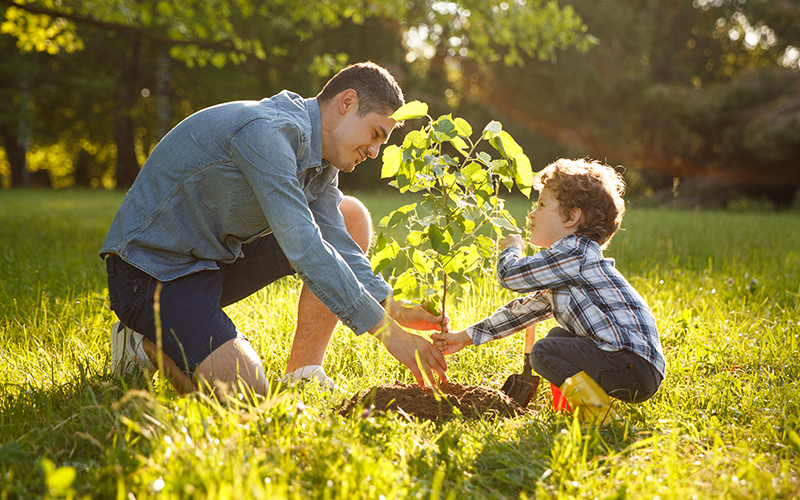The urban landscape has an earned reputation for poor soil quality. The standard development process involves stripping the original topsoil from the land; scraping, shaping, and compacting the subsoil during the building process; and top-dressing with a few inches of screened sterile dirt covered with sod. It may green up, but it’s a far cry from healthy soil. Add in a few young trees and shrubs per the job specification and it looks a little more natural, but problems await.
Soil isn’t just dirt. Ideally, soil is a stratified media comprised of comingled organic and inorganic materials developed over millennia and chalk full of biological organisms that form a complex ecological web. Soil is the foundation of terrestrial life. In temperate regions like ours, soil quality dictates how much life the land can support. Better soil= better plants.
Tree roots absorb water and essential nutrients from the soil. When soil is unhealthy or limited, trees will often fail to establish, and when they do survive, they can become prone to pest and disease issues. Without intervention chronically poor soil conditions can result in tree premature decline or failure.
There is no substitute for rich native soil. Regular additions of organic material such as leaf mold, bark mulch, and wood chips can improve soil health over time, but this process isn’t always feasible or realistic in some landscapes.
Regular fall soil injections of root growth stimulant can improve soil nutrient levels and provide relief to stressed trees after a long hot, dry summer.
- The product contains elemental nutrients, beneficial soil microorganisms, and organic matter that improve soil ecology.
- The process of injecting the solution into the root zone of trees creates air spaces that helps relieve soil compaction.
- The application is water based and provides an opportunity to thoroughly irrigate the important landscape trees. Drought stressed trees struggle going into dormancy and are prone to pest and disease.
Call today to schedule an appointment with one of our arborists to see if a root stimulant application would be appropriate for your trees and shrubs this fall.



